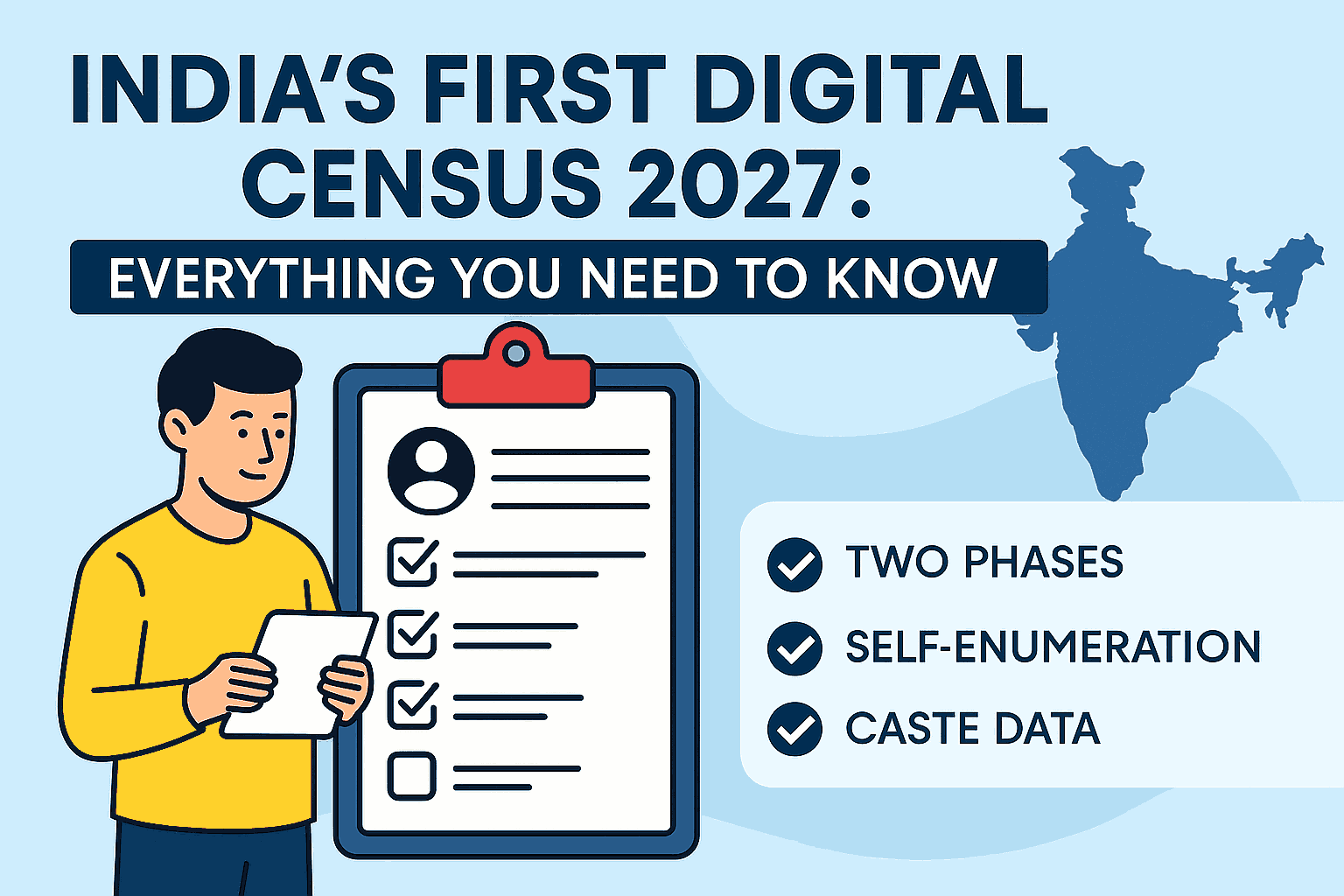India is gearing up for a historic shift in how it counts its population. The Digital Census 2027 is poised to introduce a tech-powered transformation to one of the world’s largest data collection exercises. Here’s a simple, clear breakdown of what to expect—and why it matters.
Table of Contents

💡 What’s New in Census 2027?
For the first time, India’s census will be completely digital. That means:
- ✅ Data collection will happen using mobile apps, not traditional paper forms.
- ✅ People will be able to fill in their own details online through a secure government portal—this is called self-enumeration.
This major shift aims to make the process faster, more accurate, and more inclusive.
📅 When Will It Happen?
The Census will be conducted in two phases:
- April 2026 – Houselisting and Housing Census (HLO):
This phase collects information about households, like building type, drinking water, electricity, and toilet access. - February 2027 – Population Enumeration (PE):
This phase involves counting every person and collecting personal details like name, age, gender, education, and—for the first time—caste.
🔄 What’s Different This Time?
- 📱 Mobile app-based data collection using Android & iOS devices
- 🌐 Self-enumeration through an official web portal
- 🗣️ Support for multiple languages, including Hindi, English, and regional languages
- ⚡ Faster results: Unlike past Censuses that took 2–3 years for data release, the digital system will speed things up significantly
- 📋 Caste data will be included, allowing a deeper look into India’s social structure
📌 Why Is This Important?
The Census is more than just a headcount. It directly affects how resources are allocated and how political boundaries are drawn.
- 🗳️ Lok Sabha constituency boundaries could be redrawn based on this data.
- ⚖️ States with growing populations may gain more representation in Parliament.
- 📈 Data helps the government plan better welfare programs, infrastructure, and education initiatives.
📣 Will People Know About It?
Yes. A nationwide publicity campaign will raise awareness, ensuring everyone knows how and when to participate, especially in remote and underrepresented communities.
🧾 What Questions Will Be Asked?
In past Censuses, questions included:
- Type of house (roof, floor, number of rooms)
- Drinking water and electricity access
- Cooking fuel used
- Gadgets owned (TV, radio, phone, etc.)
- Mobile number
- Number of people in the household
In 2027, caste details will be added to this list.
🏁 Final Thoughts
India’s Digital Census 2027 isn’t just about new technology—it’s about building a smarter, faster, and more inclusive future. By modernizing how we collect vital population data, India is taking a bold step toward transparency and better governance.
📌 Summary Table
| Feature | Details |
|---|---|
| What | India’s First Digital Census |
| When | April 2026 (HLO) & February 2027 (PE) |
| What’s new | Mobile app, online self-enumeration, caste data |
| Why it matters | Faster results, political impact, smarter planning |

